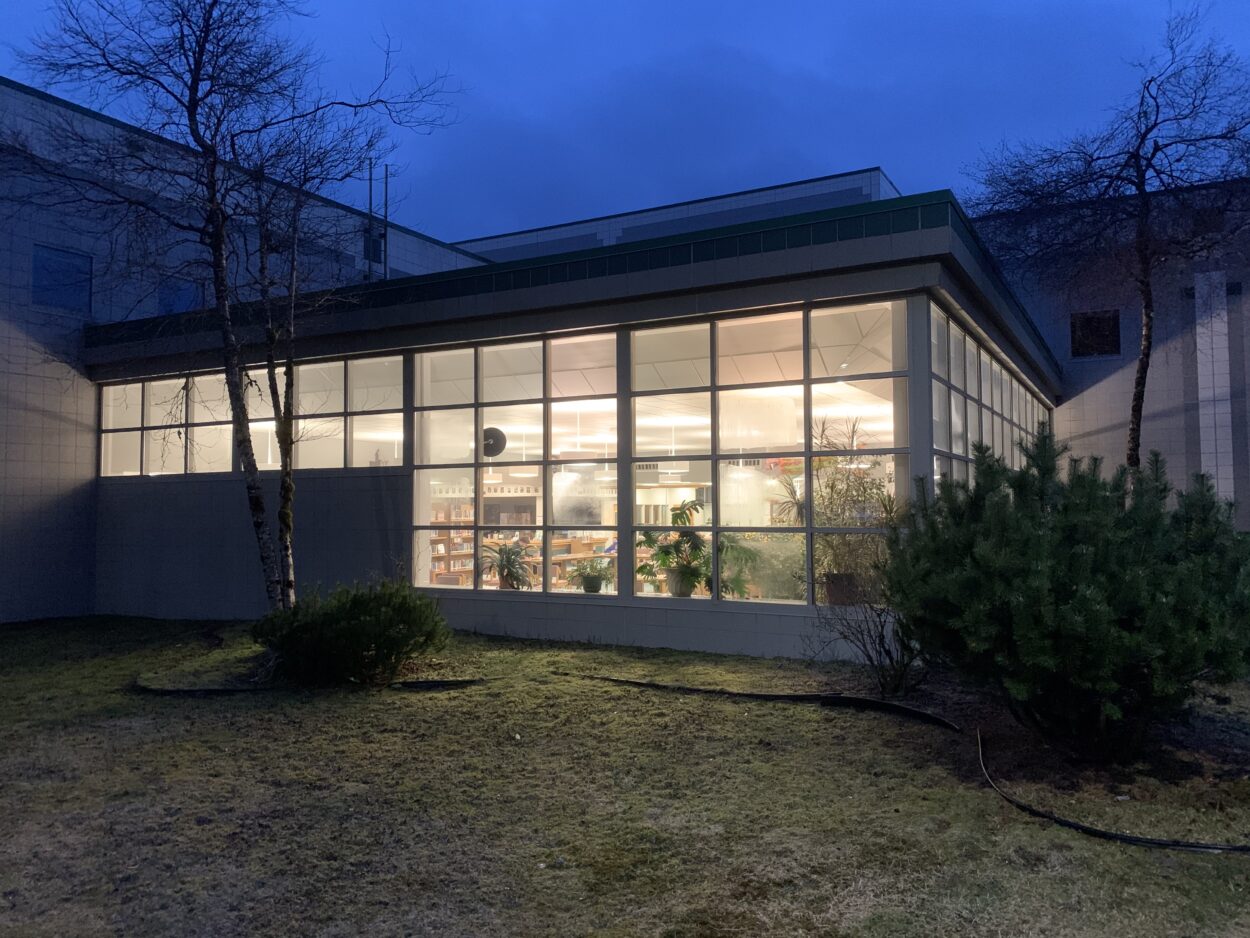
Ketchikan’s school board meets in closed session in the Ketchikan High School library in March. (Eric Stone/KRBD)
Ketchikan’s school board says a draft policy requiring it to consult with local tribal governments is overly broad and should be refined by its policy committee.
The draft policy says that the school board and district staff must “take every opportunity” to consult with local Alaska Native tribes. It’s part of a broader effort to give Ketchikan’s federally-recognized tribes more input on local education.
But Board Member Bridget Mattson questioned at Wednesday’s meeting whether the requirement should apply to school district staff.
“While I appreciate the sentiment of that, what is ‘every opportunity?’ That’s an awful lot that we’re putting on staff. Does that include teachers?” she said. “That, to me, seems potentially onerous.”
Board Member Diane Gubatayao said the policy wasn’t intended to require all district staff to reach out to Ketchikan Indian Community and the Organized Village of Saxman. She says it’s really about the governing bodies working together.
“I think this is about government-to-government. So it’s really about the elected bodies consulting, and that would not necessarily include our staff,” she said.
She said the inclusion of staff in the policy was a consequence of the fact that school district employees might be tasked with scheduling the consultation meetings.
Board Member Jordan Tabb said he was concerned the policy might be unrealistic.
“What expectations are we making to our members in the community? To say like, ‘Hey, we’re going to call you before every agenda-setting to make sure that this is okay with you.’ Because that would come under ‘every opportunity,'” he said. “So maybe that language needs to be adjusted.”
The board sent the policy proposal back to its policy committee to adjust its wording.
In other business, Ketchikan’s school board unanimously approved a deal worth roughly $240,000 over five years to replace aging tech infrastructure. The 10 new servers are intended to keep up with increasing demands on the district’s technological backbone and add new capabilities.





